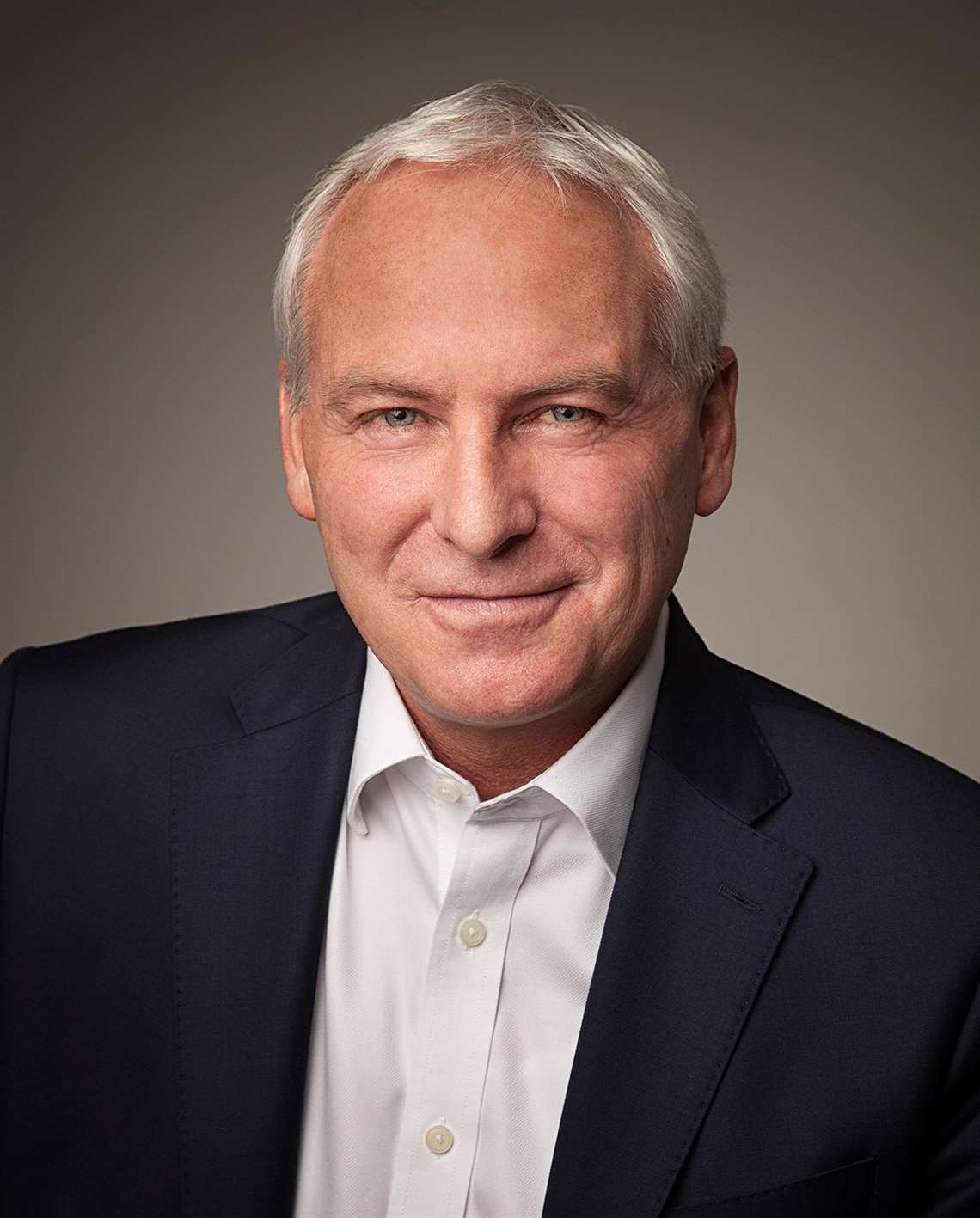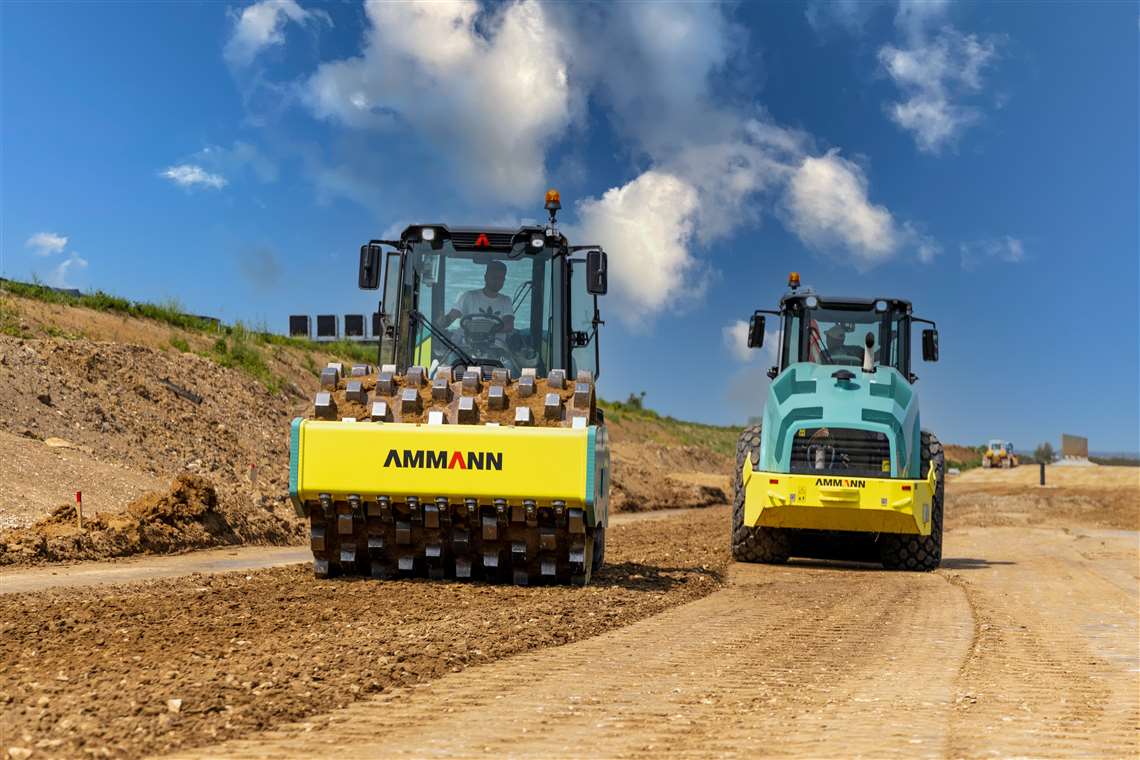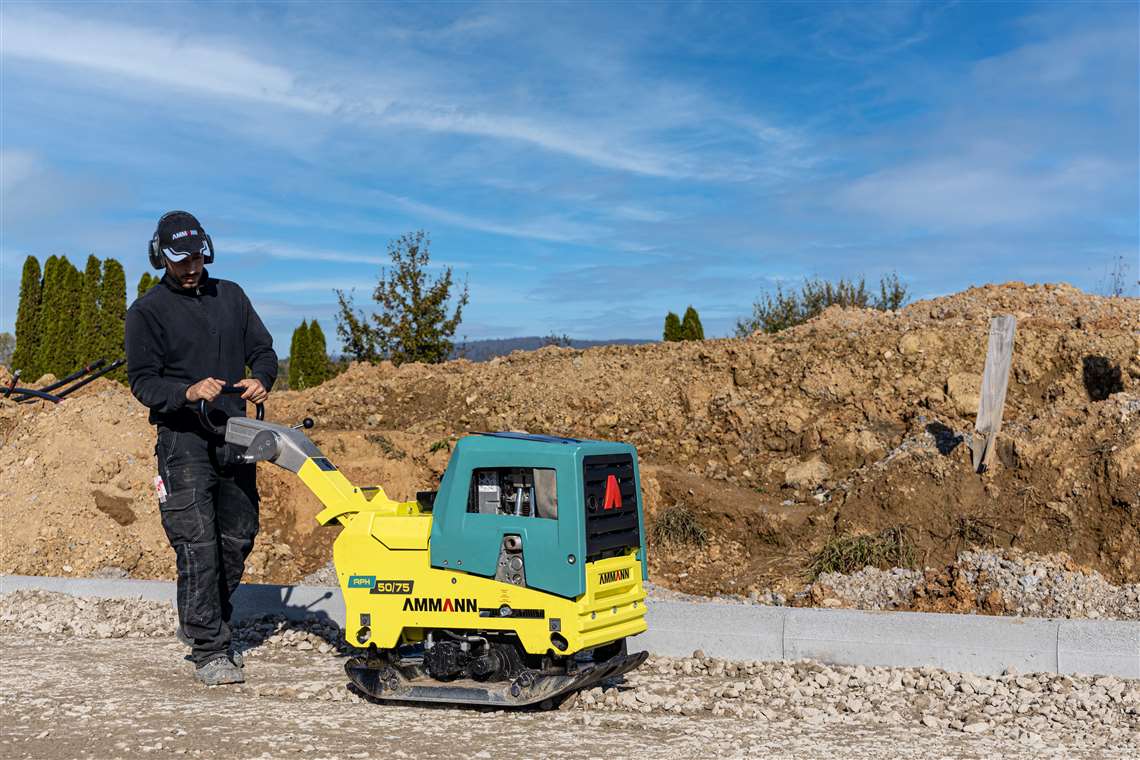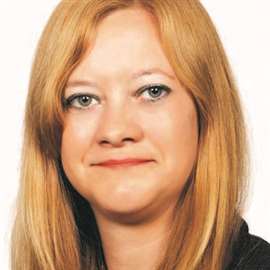Comment: OEM perspective on rental’s digital transformation
29 April 2021
In this Comment piece, Patrick Stellwag, Strategic Account Manager at Ammann, gives his views on how digital technology is driving change in the equipment rental industry.
Rental companies were already engaged in a digital transformation, but what impact has Covid had?
Patrick Stellwag, Ammann: “The changes made during Covid are here to stay. Intense investment is needed to improve digital services because customer expectations are rising. This is increasing the speed at which new developments are introduced.
 Patrick Stellwag, Ammann’s Strategic Account Manager.
Patrick Stellwag, Ammann’s Strategic Account Manager.
The major rental houses invested a great deal into making their products and services available digitally before Covid. That was done over the last several years and in some cases even earlier. However, not many customers took full advantage of these digital efforts.
Then Covid came, and the whole world became more digitally focused. Think of your personal experiences, such as ordering food or household goods. Consumers were suddenly open to contactless solutions.
That was certainly the case with rental, too. Rental customers, like everyone else in the world, were concerned about Covid-related health and safety. After several weeks and enormous effort, rental companies offered contactless processes in their depots.
Customers began to utilise contactless pickup of machines, which required using the rental houses’ digital services. The customers had been moving in this direction before COVID, but at a very slow pace.
The rental houses also had safety front of mind at this time – not only for their customers but for their personnel as well. Contactless pickup and handling were a priority for them on several fronts.
Has that led rental houses to expand and improve their digital offerings?
Patrick Stellwag: Yes, though of course it varies from one rental business to another. But as an industry, the answer is yes.
Previously, the tools most commonly used were ordering and invoicing. Those were available when Covid hit. That was important because making an order digitally is paramount for contactless pickup.
Rental houses have built on that ordering component to include more nuanced offerings. “Ordering” is a broad term. It was offered at a very basic level. Today the options within that category are growing. The tools are becoming much more robust and intuitive. That makes a difference for both the rental house and the customer.
How has this improved ordering process impacted the rental houses?
Patrick Stellwag: The end users now are more likely to reserve machines further in advance than they were in the past, which is a great benefit to the rental houses. The end users are on the website or rental tool, and they see the machine they want will not be available for a few days. Yet they’re already on the site, so they’re likely to click “reserve” for a time when it is available – and be done with it.
Why risk availability when you’re already on the site and you can reserve it with a simple click?
 Ammann ARS soil compactors.
Ammann ARS soil compactors.
This planning also means end users might reserve a machine much earlier than they previously did. The further in advance the customer orders the machine, the more efficient and cost-effective the planning and delivery process for the rental house.
Service is impacted, too. The rental house can plan service weeks ahead of time. It knows when a machine will be returned and can arrange maintenance accordingly.
This makes it more likely preventive maintenance will be completed, which has an enormous impact on machine life and fleet availability. It follows that there would be improvements in the utilisation rate and repair costs.
Many end users rent machines for extended periods. Can a digital world help make these transactions more efficient, too
Patrick Stellwag: Yes, and it makes service and logistics easier to plan and maximises utilisation, too. I’m not saying these weren’t factors before - they were. But now we are starting to see them coordinated much more effectively and efficiently to the point they are having a real impact on utilisation, maintenance and ultimately profitability.
Utilisation is the key, as is optimisation of logistics. The ultimate goal is to get the best use out of the equipment during its life cycle and to optimise transport, which positively impacts the rental business’ CO2 footprint.
How important is it for the customer to have a positive digital experience, and how does that impact the relationship between the rental house and the customer?
First, customers have to be able to effortlessly find what they need. Second, rental houses need to keep their promises – they need to deliver the equipment on time, with all the correct options and attachments. And the machines have to be productive.
Regarding that productivity – the key to that is finding the right machine for the application. Rental houses have a great many products, with varied sizes and power. Some rental houses offer online tools that help the end users match the machine to the job, particularly in terms of power. That’s an improvement.
The rental houses also have staff that can answer questions over the phone, which sometimes eliminates frustrations and contributes to that positive experience. It’s not just about helping the customer find a machine. It’s about finding the right machine for the right job. That’s a pretty good experience.
The resources devoted to developing and maintaining digital tools are considerable. Does the cost justify the effort?
Patrick Stellwag: It does. It must be an easy way to do business, which makes the end users more likely to return when they need another machine or tool. That’s a nice return on investment, from the start.
Enhancing these efforts are manufacturers’ telematics services. For example, Ammann offers ServiceLink, which provides data that customers want the most: machine location, battery voltage and working hours.
The management tools are particularly helpful in providing individually defined data to the rental company during long-term rentals and renting of heavy compaction equipment. Being able to link the rental equipment to a BIM-controlled site is getting more and more important and of course beneficial to the rental house and customer.
End users are more likely to continue to rent instead of purchasing their own machines if the digital processes are intuitive, compatible and cost-effective. In such cases the rental customer will be positively rewarded for not purchasing.
Can you explain how an end user can be rewarded for not purchasing a machine?
Patrick Stellwag: It’s about being a machine user instead of a machine owner. Rental is part of circularity. With circularity, utilisation and durability are keys. There is more efficient use of the equipment and the energy invested to develop and manufacture it.
Today, in many countries, buying is still the main approach versus rental. But things are changing. Buying has a great many disadvantages – and they’re being compounded as the digital world accelerates. When contractors buy a machine, they don’t always use it properly.
Let’s say they have an excavator that’s underpowered for a particular application. Well, they own the machine. Chances are they’re going to use it and work it extra hard. This hurts productivity, the life cycle and the TCO (total cost of ownership) of the machine.
 An Ammann APH 5075 vibratory plate.
An Ammann APH 5075 vibratory plate.
There are significant productivity advantages when a machine is properly matched for the jobsite. You won’t have that if you own a machine and force it to fit a jobsite. Proper utilisation is the key to a good return on investment.
The rental customer is more likely to have a sound utilisation strategy through renting equipment. It makes sense for a rental fleet to buy that equipment because it has many customers who can make that utilisation work.
Circularity has an environmental impact, too. Utilisation makes the most of the raw materials and energy invested in the development of the equipment. Refurbishment at the end of the life cycle is another option, giving the equipment a second life – an enormous environmental gain.
In summary, the rental customer is rewarded by not only saving money, but also by using the best-suited and most innovative equipment for the job. It’s about just-in-time logistics, professional support and service, and reducing CO2 on a daily basis. This results from utilising newer machinery.
Does rental gives end users the opportunity to access more modern equipment? It seems rental houses update their fleets more frequently than an individual business.
Patrick Stellwag: Being able to use the latest and greatest equipment is certainly another key advantage to renting. We already have incentives that create a great customer experience, and now we’re adding yet another: a chance to use the most productive, comfortable, technologically advanced and environmentally friendly machines out there.
New machines definitely offer significant green benefits. Each new generation of machines is greener. Ultimately, that means rental is helping offset C02. This will become more important as the Paris climate agreement comes of age. Rental houses are clearly stating their methods for reaching the goals of the Paris Agreement.
Green benefits also result from using a properly sized machine on a job. Fuel efficiency is better, the utilisation rate is much higher and using the right equipment for the job extends machine life. It’s hard to find a greener benefit than extending the life of equipment.
What do you expect to see in the next few years?
Patrick Stellwag: Manufacturers are offering telematics data and services that meet the needs of customers. Ammann has one such solution in ServiceLink.
ServiceLink is an OEM telematic portal available for all machines in the Ammann portfolio, from a small rammer without a starter to a large tracked paver. This tool can deliver a full range of data such as location, battery status, operating hours and fuel consumption.
It can be accessed via browser (web application) or, with reduced functionality, through a mobile app. There are expectations for tools such as ServiceLink. The solutions must be easy to learn, intuitive, and reliable.
These tools must also adhere to proper administrative processes. All data transfer must follow ISO 15143-3 2020 standards. The data must also be transferable to the contractors’ individual ERP systems. These solutions must deliver additional value to both the companies and their customers.
Contractors are becoming more focused on the telematics and the tools must keep up with their increased expectations. The potential is immense in the rental business, even if such solutions become standard.
Eventually, these telematics must all connect to third-party, open platform systems where data of different equipment brands – and varied digital tools – can be fully managed.
The use of such open data platforms will be the way forward. We’re not there as an industry now, but we’re moving in that direction. In the future, there will be even more reliance on data – and more sharing of data, too.
You have talked a lot about the customer experience in the digital world. Is there a way to enhance that experience beyond digital efforts?
Patrick Stellwag: One thing we’re seeing is the impact of end users’ brand loyalty. We at Ammann might see this more because of our extensive product offerings, be it machines or through digital efforts.
End users have diverse needs … and yet they don’t have diverse needs. What I mean by that is, say, a larger landscaper needs many tools within a product range. He might need a rammer, a vibratory plate compactor, a trench roller, a soil compactor of 7 tonnes, and then maybe even some light tandem roller options. They’re different machines but all could be used on his jobsite.
Having a single brand that offers all those products helps the rental house. First, it doesn’t have to deal with a great many manufacturers.
Second, customers develop brand loyalty. Their operators feel more comfortable going between different types of machines from the same manufacturer. The controls are similar so it’s easy to jump from one machine to another.
A rental fleet manager will also appreciate the consistent servicing and reduced spare parts stock offered by a single brand.
International Rental News thanks Ammann for contributing this Q&A article.
STAY CONNECTED



Receive the information you need when you need it through our world-leading magazines, newsletters and daily briefings.
CONNECT WITH THE TEAM








